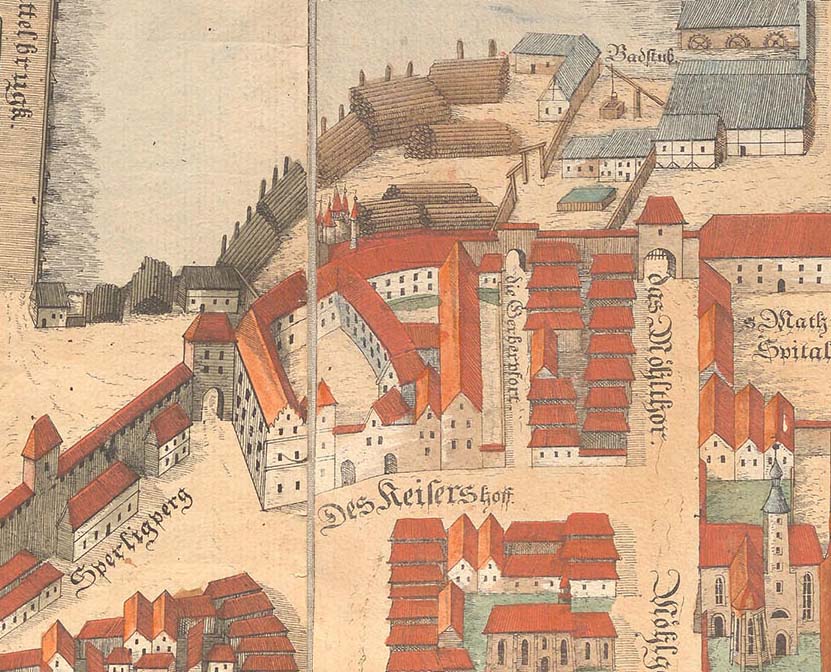History
Initially, on the site of the left bank there were Henry II and Henry IV mansions, and possibly Henry I mansion. The proper castle was built in the early 14th century in the northwest of the manor houses as the residence of King Wenceslas II. It essential shape was founded in 1346-1378 on the initiative of Emperor Charles IV of Luxembourg, who often visited Wroclaw. In 1659, the emperor Leopold I handed over the castle area to the Jesuits. Already in 1689 they demolished the southern wing, which was replaced by the church. Western wing and stables were demolished in 1728-1731, and the main building before 1734. The northern wing was dismantled in 1851-1858.
Architecture
The castle was situated in the northern part of the city, close to the Oder river bank. It was included in the fragment of city defensive walls, to which it was added, using one of the city corners, limited from the east and west by streets leading to the city gates. It was a large complex consisting of numerous buildings clustered around the courtyard on a triangular plan. There were three towers above the buildings, the most powerful of which was the quadrilateral northern tower built in 1350 at the behest of Charles IV, erected in front of the curtains of the city wall. It was probably crowned with four corner, late Gothic bartisans. Another tower flanked the entrance gate from the town side, while the third one defended the west corner of the castle. It seems that the main residential and representative wing was the western building, at least three-story with an attic from the city side, topped with a Gothic, stepped gable.
Current state
The castle has not survived to modern times. His only remnant is, devoid of the original appearance, the sacristy of the university church.
bibliography:
Leksykon zamków w Polsce, red. L.Kajzer, Warszawa 2003.




